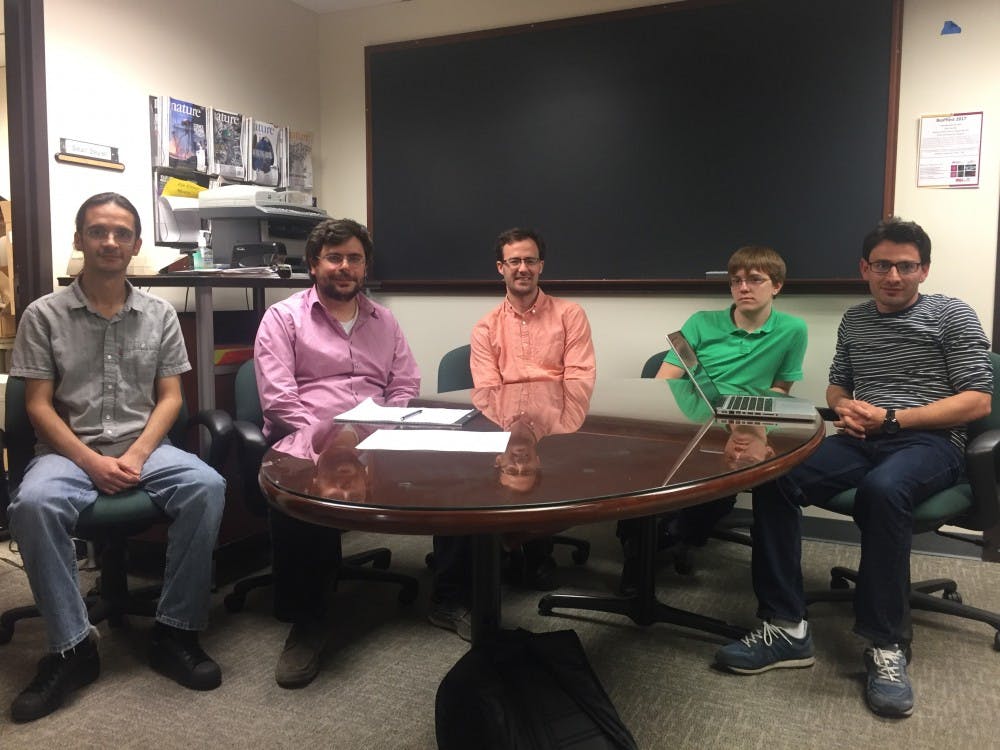ASU researchers have provided insight on how predatory microbes move, with hopes to someday fight bacteria with bacteria.
Steve Presse, the principal investigator of this lab, runs three projects, one detailing the movement of predatory bacteria, another researching the statistical interpretation of data, and the last dealing with a theoretical approach to how enzymes work.
“The impact is ultimately to be able to exploit bacterial predators as living antibiotics one day,” Presse said.
He said that the majority of the cells in the human body are actually bacteria, and research into using them to provide health benefits has been largely overlooked.
“To ignore 90 percent of the cells inside our body would probably not be a productive strategy in the long run,” Presse said.
Because his research is purely scientific, Presse said it would probably take “one to two decades, optimistically” to see tangible effects from any of it.
Yet, he said this fact does not worry his team.
“What I’m most excited about are those areas where very little is known and where the greatest progress can be made,” Presse said.
He and two members of his team said they moved to ASU from Indiana University-Purdue University of Indianapolis last January, and enjoyed their transition.
Besides their research into bacteria, Presse’s team also does theoretical work in statistical analysis, aiming to help other researchers pinpoint which data to focus on, as well as enzyme motors, intending to figure out why they are so much more efficient than industrial motors, Presse said.
Still, researchers have long wondered how predatory bacteria find their prey, Presse said, and they have mostly focused their research on how bacteria follow a chemical breadcrumb trail to find each other.
Hossein Jashnsaz, a Ph.D student working with Presse, found that hydrodynamics, or the movement of water, helps these bacteria move more than previously thought, Jashnsaz said.
“These bacteria are generally living inside fluids,” Jashnsaz said. “And when they are swimming, they are creating a flow around themselves.”
The fluid disturbances around the bacteria help them find each other, leading to one’s demise and the other’s meal, he said.
“We looked at this very carefully and we realized that … this happens happens to both of them and collocates them,” Jashnsaz said.
David Rowland, a postdoc working with Presse, said he is organizing the next step of the experiment: observing how bacteria move inside a living organism.
While the lab is mostly interested in the bacteria’s movement, Rowland said the end goal of such research is eventually manipulating people’s microbiomes, or communities of bacteria within the human body, for medical purposes.
“The two prominent ones are the gut microbiome and the skin microbiome,” Rowland said. “You should be able to engineer the two … to fix maladies or give yourself extra abilities.”
He said this entails changing people’s moods, fighting diseases, or digesting previously indigestible matter.
“How all of these microbes, these bacteria, interact with each other inside of a larger organism is really important to the health and viability of the large organism,” Rowland said.
But their research on bacteria comprises only one third of their work, Presse said.
Ioannis Sgouralis, also a postdoc researching in the lab, said he focuses on researching data methods.
“It’s not the question of measuring something very accurately, but knowing specifically what we measured and what it means,” Sgouralis said.
While he said he uses data from the bacteria for his research, he also analyses other researchers’ data, which he compiles in his own research.
“This is broader than biological physics,” Sgouralis said. "My projects deal with biological applications, but the same techniques, the same concepts could be applied in a broader context.”
Reach the reporter at chawk3@asu.edu.
Like State Press on Facebook and follow @statepress on Twitter.





